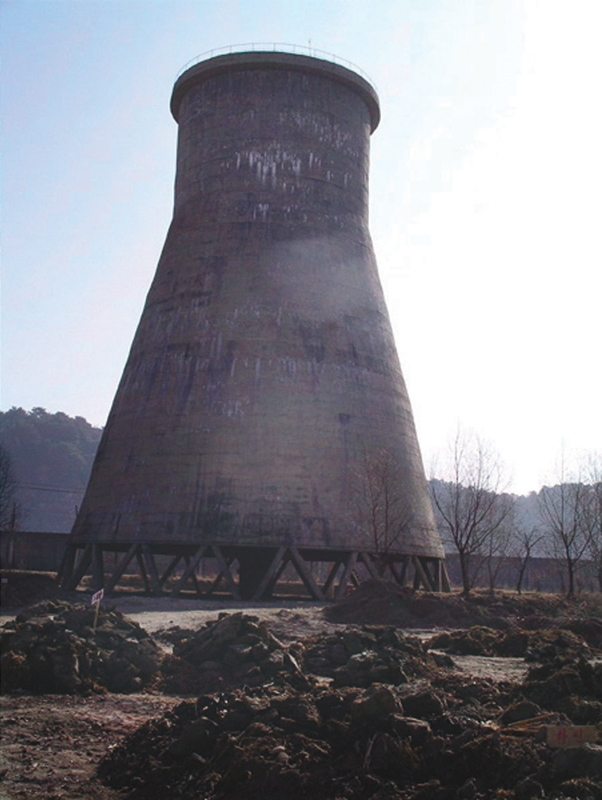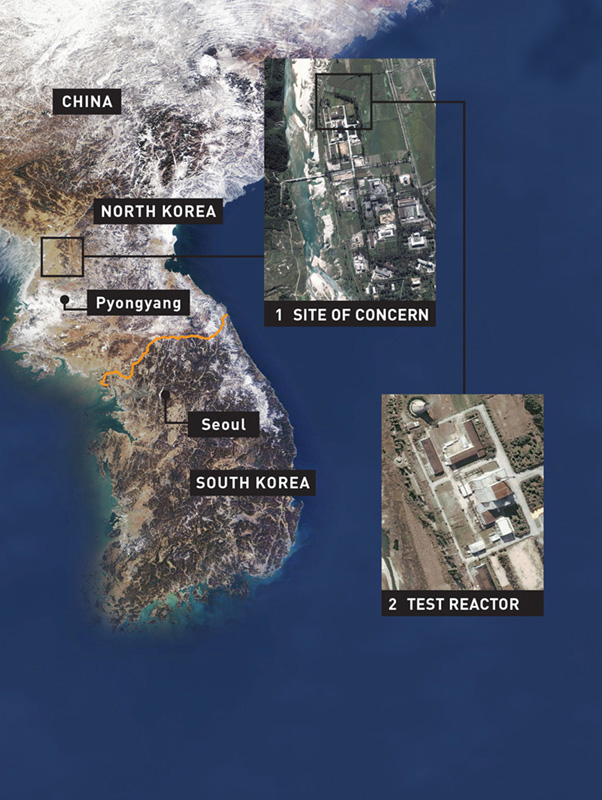
92 Yongbyon Nuclear Scientific Research Center
LOCATION North Pyongan Province, North Korea
NEAREST POPULATION HUB Kaechon
SECRECY OVERVIEW Operations classified: the heart of North Korea’s controversial nuclear program.
The Yongbyon Nuclear Scientific Research Center has been a source of friction between North Korea and the international community ever since it began operating in the 1980s. North Korea’s refusal to submit to inspections by the International Atomic Energy Agency (IAEA) has led to several stand-offs with the wider world, which is keen to establish Pyongyang’s nuclear capabilities.
While North Korea is quite within its legal rights to foster a nuclear program for civilian purposes, the international community (and most of all South Korea, with whom North Korea has never signed a formal peace treaty to end the war of 1950–53) fear that the real focus of such a program is inevitably on manufacturing weapons.
Yongbyon lies within a mountain clearing in North Pyongan province, about 100 kilometers (60 miles) north of Pyongyang. The center includes a five-megawatt reactor and a fuel reprocessing facility, where weapons-grade plutonium can be extracted from spent fuel rods. Yongbyon’s history has closely followed the changing fortunes of the international talks designed to steer Pyongyang away from a nuclear weapons program.
The complex was built in the early 1980s, but its existence was not declared to the international community as it was required to be. By 1990, US intelligence had evidence that it included facilities for producing weapons-grade fuel. In 1991, North Korea signed a Joint Declaration with South Korea on denuclearization of the Korean Peninsula, and the following year agreed to IAEA inspections (as it should have done back in 1985 when it signed the Nuclear Non-Proliferation Treaty). However, in 1993 Pyongyang objected to certain IAEA demands, spurring renewed concerns about its nuclear intentions.
The North promptly threatened to leave the treaty altogether, raising tensions with both South Korea and the US. New hope came in 1994, however, with an Agreed Framework between Washington and Pyongyang. Yongbyon was to be dismantled in return for an easing of sanctions and the provision of alternative energy supplies.
However, the situation took a turn for the worse in 2002, with North Korea acknowledging its nuclear weapons program for the first time and US President George W. Bush labeling the country as part of an “axis of evil.” Pyongyang announced in February 2003 that Yongbyon had been reactivated and that North Korea was indeed withdrawing from the Nuclear Non-Proliferation Treaty.
However, by late 2005, six-party talks involving North and South Korea, China, Japan, Russia and the USA seemed to have established a new settlement, with North Korea again agreeing to abandon its nuclear ambitions in return for much-needed financial aid and certain political concessions. However, when talks became deadlocked, North Korea conducted its first nuclear weapons test. The following year, Pyongyang eased its position again, allowing IAEA inspectors to visit Yongbyon and promising to shut down the reactor in return for being removed from Washington’s list of state sponsors of terrorism. The dismantling process began in June 2008 with the spectacular destruction of the main cooling tower at Yongbyon.

KEEPING COOL The cooling tower at Yongbyon was blown up by the North Korean authorities in 2008 in an apparent gesture of rapprochement with the West. However, hopes of more cordial relations were soon dashed as Pyongyang ordered a new nuclear test.
Yet doubts remained as to how honest North Korea was being about its nuclear facilities, and relations soon took another downward turn. North Korea banned further IAEA inspections, withdrew from talks in 2009 and conducted another nuclear test. In 2010, Pyongyang was blamed for the sinking of a South Korean naval vessel and for shelling a South Korean-held island, further raising the stakes.
In November 2010, satellite imagery confirmed that Kim Jong-il’s regime was in the process of building a new reactor at Yongbyon, on the site of the former cooling tower. More satellite photos in 2011 backed up assertions from Pyongyang that building was “progressing apace.” Experts concluded that while it is designed for civilian purposes, it could be easily adapted for the production of weapons-grade uranium. During 2010, Pyongyang had used a military parade to showcase a new class of intermediate-range ballistic missiles capable of bearing a nuclear payload. Whether the North has yet developed a warhead to fit the missile is not known.
For several decades, the ruling regime in North Korea has been characterized by paranoia about its standing in the world. In that light, its nuclear program has proved a useful tool in drawing concessions on various issues. Nonetheless, by keeping independent observers away from Yongbyon for prolonged periods, Pyongyang has entered into a risky game of brinkmanship, in which no one can be sure of the outcome. But, ever more isolated on the international stage and with its economy crippled by a lack of international trade, the country may have few other cards left to play.

1 SITE OF CONCERN Satellite imagery of the nuclear reactor at Yongbyon, taken in 2005. The North Korean regime has consistently refused to play ball with the international community over access to the facility, using it instead as a pawn in its international relations.
2 TEST REACTOR A detailed view reveals the tower of the 5MW experimental reactor at Yongbyon, source of much of the radioactive material used in North Korea’s nuclear tests. The cooling tower dismantled in 2008 can be seen at upper right—a new reactor is now under construction in its place.